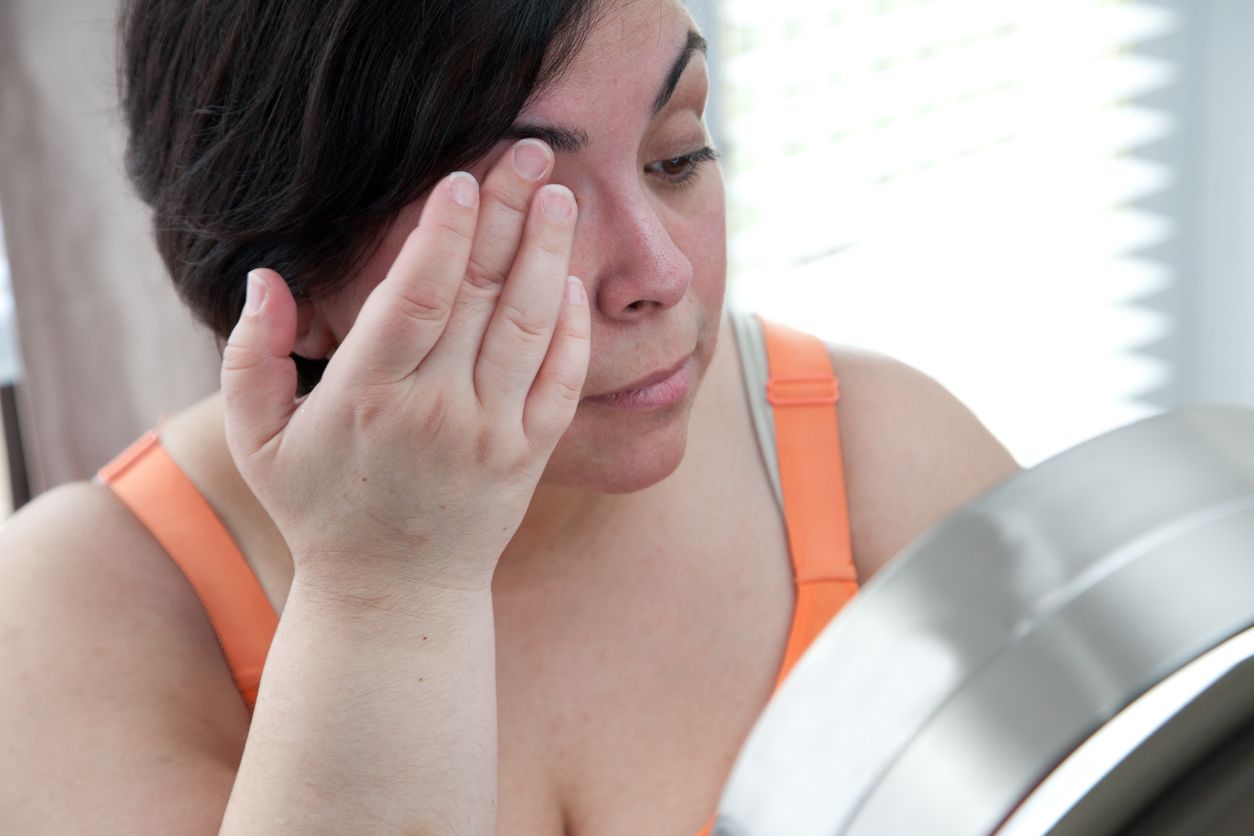- Home
- Trend
- Weight Loss Strategies
- Acne Tips
- Hair Health Information
- Blemish Removal Tips
- Acne Scar Removal Tips
- Muscle Building Techniques
- Intimate Care Tips
- Postpartum Intimate Care
- Eye Bags Wiki
- Tips for Face Slimming
- Secret of Permanent Hair Removal
- Breast Enlargement Tips
- Cure to Snoring
- Marionette Lines
- Skin-Tightening Secrets
Eye bags, marked by puffiness and dark circles under the eyes, are a common concern that can leave you looking perpetually tired and older than your years. The quest for a more youthful and refreshed appearance drives many to explore various treatments to tackle eye bag fat, so let's take a look at the causes and compare the solutions available today to see how you can deal with the issue
Who Gets Fat Around the Eye Easily?
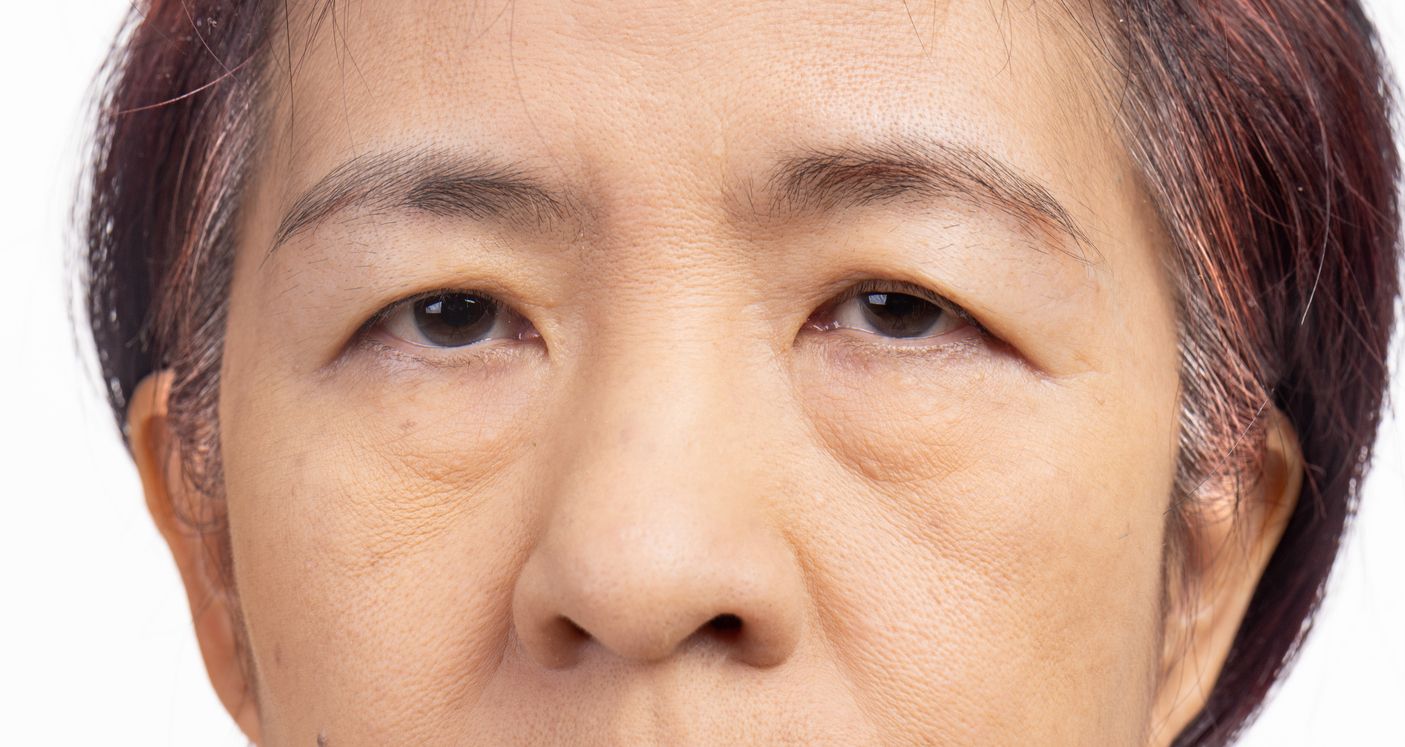
Eye bag fat, characterised by puffiness and swelling under the eyes, can affect individuals of all ages and backgrounds. However, certain factors can make some people more prone to developing eye bags. Understanding these factors can help in managing and preventing the formation of eye bags.
• 1. Genetics
One of the most significant factors in the development of eye bags is genetics. If your parents or close relatives have prominent eye bags, you are more likely to develop them as well. Genetic predisposition can influence various aspects such as the distribution of fat, skin elasticity, and the overall structure of the under-eye area.
• 2. Aging
As people age, the skin naturally loses collagen and elastin, which are essential for maintaining skin's firmness and elasticity. This loss leads to sagging skin and the formation of eye bags. Additionally, the muscles and tissues around the eyes weaken over time, causing fat that supports the eyes to move into the lower eyelids, making them appear puffy. Aging also contributes to fluid retention in the under-eye area, exacerbating the appearance of eye bags.
• 3. Lifestyle Factors
Certain lifestyle habits can significantly contribute to the development of eye bags. One major factor is the lack of sleep. Inadequate sleep is a common cause of eye bags, as poor sleep quality can lead to fluid retention around the eyes, resulting in puffiness and dark circles. Over time, chronic sleep deprivation can also exacerbate the sagging of the skin under the eyes, making the problem more pronounced.
Diet also plays a crucial role. A diet high in salt can cause fluid retention, leading to swelling and puffiness around the eyes. On the other hand, a balanced diet rich in vitamins and minerals supports skin health and can reduce the likelihood of developing eye bags.
Smoking and alcohol consumption are other significant contributors. Smoking accelerates the breakdown of collagen and elastin in the skin, leading to premature ageing and the formation of eye bags. Excessive alcohol consumption can cause dehydration, making the skin around the eyes appear more sunken and dark, further exacerbating the problem.
• 4. Allergies and Sinus Problems
Allergies and sinus issues can cause inflammation and swelling around the eyes, contributing to the appearance of eye bags. Allergic reactions can lead to itchy, watery eyes, prompting individuals to rub or scratch the area, which can further aggravate puffiness and dark circles.
• 5. Hormonal Changes
Hormonal fluctuations, particularly during menstruation, pregnancy, and menopause, can lead to fluid retention and changes in skin elasticity, making eye bags more noticeable. Hormonal imbalances can also affect the body's ability to regulate fluid levels, contributing to swelling under the eyes.
• 6. Chronic Medical Conditions
Certain medical conditions, such as thyroid disorders, kidney problems, and chronic sinusitis, can cause persistent puffiness and swelling around the eyes. These conditions often affect the body's fluid balance and can exacerbate the appearance of eye bags.
• 7. Sun Exposure
Excessive sun exposure can damage the skin and accelerate the ageing process, leading to the breakdown of collagen and elastin. UV rays can also cause hyperpigmentation, making dark circles more prominent. Protecting the skin from sun damage by wearing sunscreen and sunglasses can help prevent the formation of eye bags.
Surgical Options for Eye Bag Removal
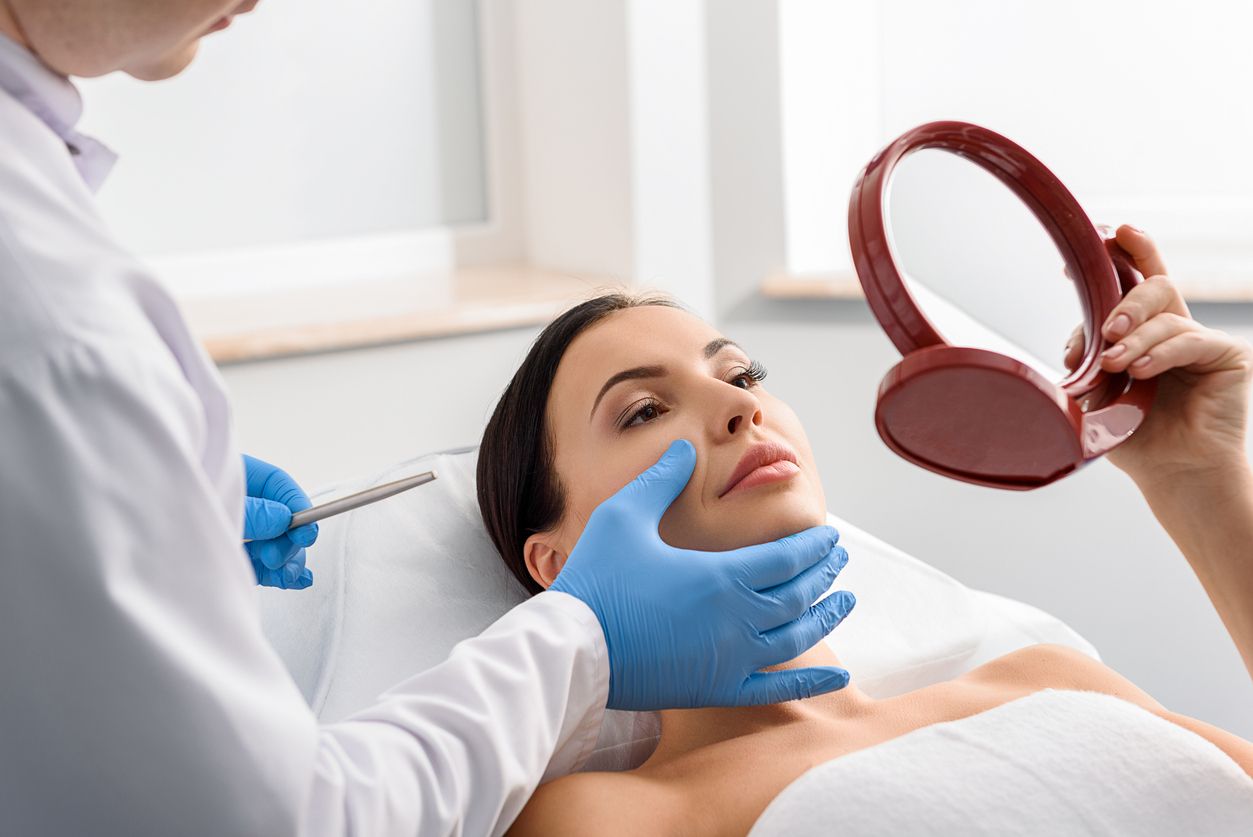
Surgical options generally provide a more permanent solution to remove eye bag fat and achieve a rejuvenated appearance. This type of eye bag removal surgery are typically performed by plastic surgeons and involve removing or repositioning excess skin and fat.
Lower Blepharoplasty
Lower blepharoplasty is a popular surgical procedure that targets the lower eyelids to remove excess fat, skin, and muscle. This procedure can significantly improve the appearance of under-eye bags and restore a more youthful look.
• Procedure Details: During lower blepharoplasty, the surgeon makes an incision either just below the lower lashes (transcutaneous) or inside the lower eyelid (transconjunctival). The choice of incision depends on the patient's anatomy and the surgeon's preference. Excess fat is then removed or repositioned, and the skin is tightened to eliminate sagging.
• Benefits: Lower blepharoplasty provides long-lasting results, reduces puffiness, and smooths the under-eye area. The transconjunctival approach has the advantage of leaving no visible scars.
Fat Grafting and Fat Transfer
Fat grafting, or fat transfer, is a technique used in conjunction with blepharoplasty to enhance results. This procedure involves harvesting fat from another part of the patient's body (such as the abdomen or thighs) and injecting it into the under-eye area.
• Procedure and Benefits: Fat grafting can fill hollow areas, smooth out tear troughs, and improve overall facial harmony. This method provides a natural-looking result and can enhance the longevity of blepharoplasty outcomes.
Reconstructive Surgery
In severe cases of sagging skin and excess fat, reconstructive surgery may be necessary. This type of surgery addresses significant deformities and can restore both function and appearance.
免費體驗
R6 Miracle Eye Rescue Treatment
1 Minute Self-Registration
Date should not be before minimal date
Comparing Non-Surgical and Surgical Approaches

When considering treatment options for eye bag removal, it's essential to weigh the pros and cons of non-surgical and surgical approaches.
Pros and Cons of Non-Surgical Treatments
• Pros: Non-surgical treatments are less invasive, involve minimal downtime, and carry fewer risks. They can be a good option for younger patients or those with mild to moderate eye bags.
• Cons: The results of non-surgical treatments are often temporary and may require ongoing maintenance. They may not be sufficient for more severe cases of bags around the eyes.
Advantages and Limitations of Surgical Treatment
• Advantages: Eye bag surgery provides more dramatic and long-lasting results. They can effectively address significant sagging and excess fat, offering a more permanent solution.
• Limitations: Surgery involves higher costs, longer recovery times, and a greater risk of complications. It also requires a skilled plastic surgeon to achieve the best results.
Non-Surgical Treatments for Eye Bags
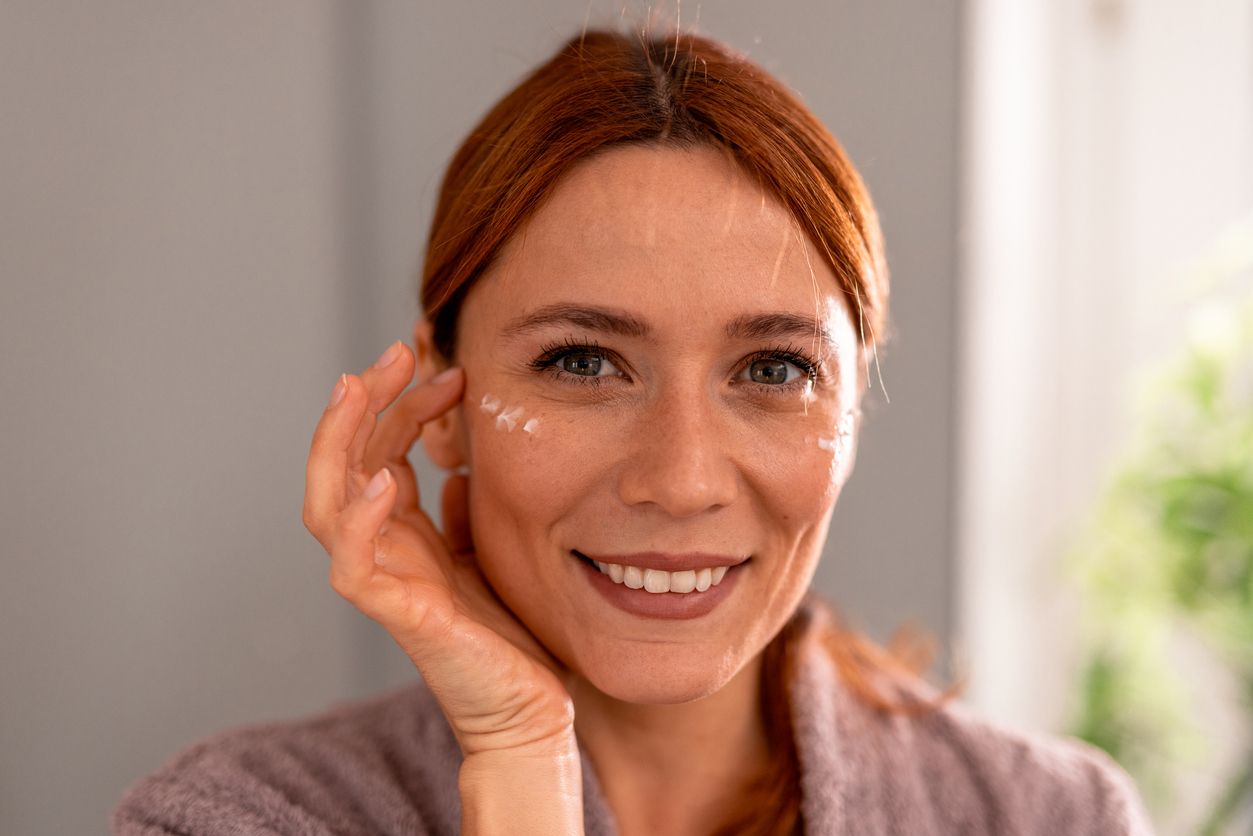
Non-surgical treatments offer a range of options for those who prefer less invasive methods to reduce the appearance of eye bags. These treatments are typically less expensive and involve minimal recovery time compared to surgical procedures. They are ideal for individuals with mild to moderate eye bags, or those who are not ready for surgery. Here are some popular non-surgical treatments for eye bags:
1. Topical Treatments and Creams
Topical treatments, including creams and serums, are often the first line of defence against eye bags. These products are formulated with ingredients that target puffiness and dark circles. When used consistently, they can provide noticeable improvements. Here are some common ingredients found in these products:
• Caffeine: Known for its vasoconstrictive properties, caffeine can help reduce swelling and improve the appearance of dark circles by constricting blood vessels. It works by narrowing the blood vessels and reducing the accumulation of fluid under the eyes. Caffeine-based products can provide a temporary tightening effect, making them a popular choice for a quick fix before important events.
• Retinol: This derivative of Vitamin A promotes collagen production, which can help firm the skin and reduce the appearance of fine lines and wrinkles around the eyes. Retinol increases cell turnover, which helps to smooth the skin and improve texture. It also has antioxidant properties that protect the skin from free radical damage. However, it is important to use retinol carefully around the delicate eye area to avoid irritation.
• Hyaluronic Acid: A hydrating ingredient that helps plump the skin and improve elasticity, reducing the appearance of eye bags. Hyaluronic acid is a naturally occurring substance in the skin that attracts and retains moisture. By increasing hydration, it can help to smooth out the skin and reduce the visibility of fine lines and puffiness. Hyaluronic acid-based products are often recommended for their gentle and effective hydrating properties.
2. Minimally Invasive Procedures
For more pronounced eye bags, minimally invasive procedures may be more effective. These treatments can provide more noticeable results without the need for surgery:
• Laser Resurfacing
This technique uses concentrated beams of light to remove damaged skin cells and stimulate collagen production. Laser resurfacing can improve skin texture and reduce the appearance of puffiness and dark circles.
The procedure works by targeting the outer layers of the skin, promoting the growth of new, healthy skin cells. Recovery time varies, but patients can usually return to normal activities within a week.
• Chemical Peels
Chemical peels involve applying a solution to the skin that causes it to exfoliate and eventually peel off. This process reveals smoother, firmer skin and can reduce the appearance of eye bags.
Chemical peels vary in strength, from superficial peels that require minimal downtime to deeper peels that may need a longer recovery period. They work by removing the damaged outer layers of the skin, encouraging new cell growth and improving overall skin texture.
• Miracle Eye Rescue Treatment
Perfect Medical’s Miracle Eye Rescue Treatment is an innovative non-surgical option that addresses multiple eye area concerns such as puffy eye bags, dark circles, and wrinkles. The treatment employs three thermal technologies to target the outermost, middle, and innermost orbital skin layers, effectively tightening the skin and dissolving eye bag fat.
The treatment utilises medical-grade radio frequency (RF) combined with red and blue light technology. This combination releases energy into the dermis layer of the eyelids, promoting blood circulation and lymphatic drainage, which helps in the removal of fat, water, and toxins. The RF energy and light therapy work together to dissolve excess eye bag fat, improve microcirculation, and stimulate collagen production.
• Targeted Issues and Suitable Users
This treatment is suitable for individuals with severe eye bags, sagging eyelids, dark circles, fine lines, and tear troughs. It continuously works to dissolve deep-level edema and eye bag fat, resulting in long-lasting tightening effects around the eyes.
• Safety and Comfort
The Miracle Eye Rescue Treatment is non-invasive, painless, and safe. It does not require incisions or injections, making it a reliable and comfortable option for eye bag removal. Patients may feel a soothing warmth during the procedure, akin to a hot towel or massage.
• Comparison to Other Methods
Compared to traditional eye bag removal surgeries, which involve incisions and longer recovery times, the Miracle Eye Rescue Treatment offers a non-surgical alternative with immediate results and no downtime. It provides a comprehensive solution by addressing multiple eye area issues simultaneously, making it an effective and convenient choice for those seeking to rejuvenate their eyes without invasive procedures.
3. Scarless Eye Bag Removal Techniques
Scarless techniques, such as radiofrequency treatments and micro-needling with radiofrequency, offer non-surgical options for tightening the skin and reducing eye bags. These methods work by stimulating collagen production and improving skin laxity without the need for incisions:
• Radiofrequency Treatments: These treatments use radiofrequency energy to heat the deeper layers of the skin, stimulating collagen production and tightening the skin. Radiofrequency treatments can be used to reduce the appearance of eye bags and improve overall skin firmness. They are non-invasive, typically painless, and require no downtime, making them a convenient option for many patients.
• Micro-Needling with Radiofrequency: This technique combines the benefits of micro-needling and radiofrequency energy to stimulate collagen production and improve skin texture. Micro-needling creates tiny punctures in the skin, which triggers the body's natural healing response. When combined with radiofrequency, it enhances the effects, resulting in firmer, smoother skin. This treatment can effectively reduce puffiness and improve the appearance of the under-eye area with minimal downtime.
Factors Influencing the Choice Between Non-Surgical and Surgical Options

• Severity of Eye Bags: Mild to moderate eye bags can often be managed with non-surgical treatments, while more severe cases may require surgery.
• Patient Age and Skin Condition: Younger patients with good skin elasticity may benefit more from non-surgical methods, while older patients with significant skin laxity may achieve better results with surgery.
• Desired Results: Patients seeking immediate and long-lasting results may prefer surgical options, while those looking for gradual improvement may opt for non-surgical treatments.
Risks and Complications
While surgical eye bag removal procedure is generally safe, it is important to be aware of potential risks and complications, which includes:
• Infection: Proper wound care and following post-operative instructions can minimise this risk.
• Excessive Bleeding: Avoiding certain medications and supplements before surgery can reduce the risk of bleeding.
• Adverse Reactions to Anaesthesia: Discussing medical history with the anaesthesiologist helps mitigate this risk.
免費體驗
R6 Miracle Eye Rescue Treatment
1 Minute Self-Registration
Date should not be before minimal date
Troubled by Eye Bag Fat? Choose Your Battles
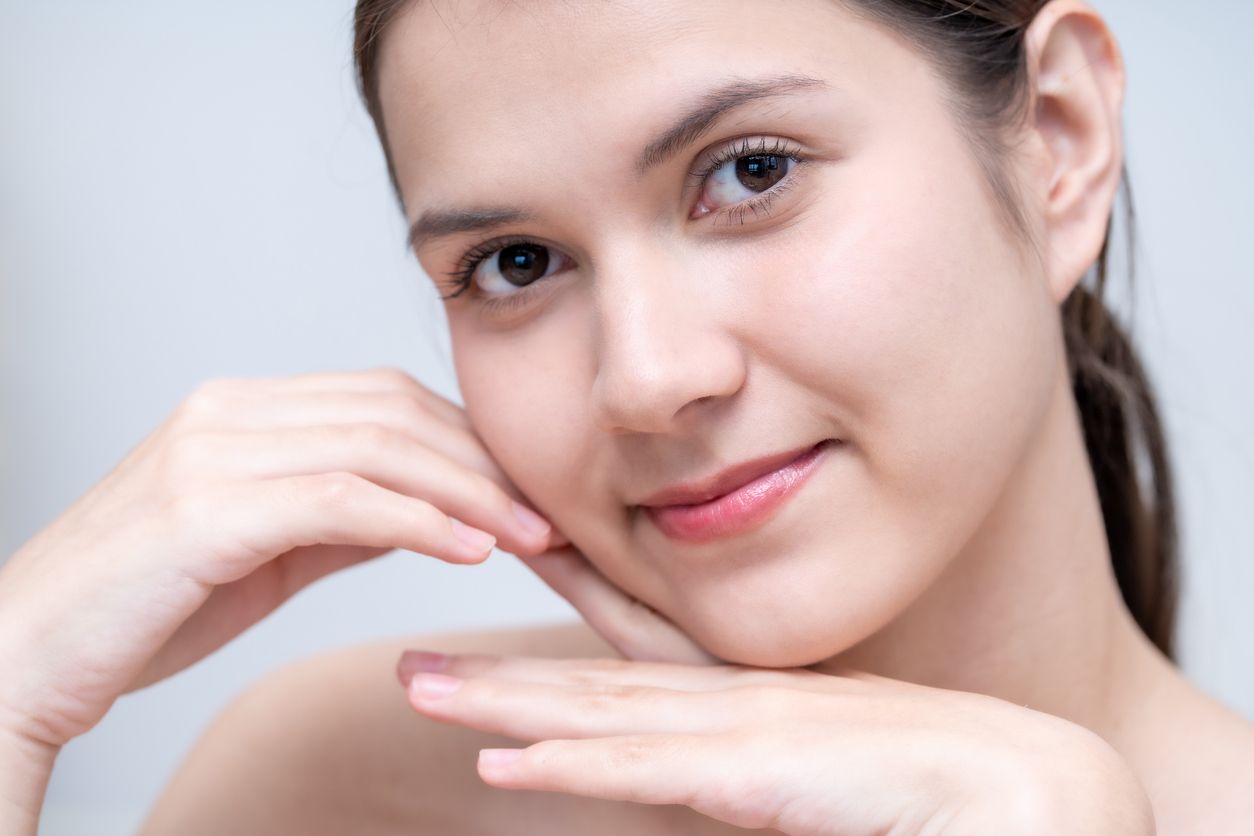
Eye bag fat can significantly impact one's appearance and self-confidence. While non-surgical treatments offer effective solutions for mild to moderate cases, surgical options like lower blepharoplasty provide more permanent and dramatic results for severe eye bags. Proper preparation, understanding the risks and benefits, and adhering to post-operative care instructions are crucial for a successful outcome. By combining the suitable procedures with a healthy lifestyle and ongoing skincare, you can achieve and maintain a refreshed, youthful appearance with bright eyes!
免費體驗
R6 Miracle Eye Rescue Treatment
1 Minute Self-Registration
Date should not be before minimal date
FAQ

1. What is eyelid surgery, and how does it help to remove eye bags?
Eyelid surgery, also known as blepharoplasty, is a surgical procedure designed to remove excess skin, muscle, and fat from the upper and lower eyelids. This procedure can effectively remove eye bags by addressing the underlying causes such as excess orbital fat and skin laxity. It can also improve the appearance of sagging lower lids and restore a more youthful and rested look to the eyes.
2. What type of anaesthesia is used during eyelid surgery?
Eyelid surgery can be performed under local anaesthesia, which numbs the area around the eyes while the patient remains awake. In some cases, especially for more extensive procedures, IV sedation or general anaesthesia may be used. Local anaesthesia is often preferred for its lower risk profile and quicker recovery time.
3. How does the redistribution of orbital fat improve the appearance of the lower lid?
Fat redistribution during eyelid surgery involves repositioning the orbital fat to smooth out the contour of the lower lid. This technique helps to fill in hollows and reduce the prominence of eye bags, creating a more even and youthful appearance. By redistributing rather than removing the fat, the surgeon can maintain a natural look and avoid a hollowed-out appearance.
4. What are the risks associated with eyelid surgery, and how common are blood clots?
As with any surgical procedure, eyelid surgery carries certain risks, including infection, scarring, and blood clots. Blood clots, though rare, can occur and are a serious complication. It is essential to follow pre- and post-operative care instructions closely to minimise risks.
5. How does getting enough sleep affect the appearance of eye bags, and can it replace surgery?
Getting enough sleep is crucial for maintaining healthy skin and reducing the appearance of eye bags. Lack of sleep can lead to fluid retention and increased puffiness around the eyes. However, while adequate rest can improve the overall look of the under-eye area, it may not eliminate eye bags caused by genetic factors, ageing, or significant fat deposits. In such cases, surgical or non-surgical treatments may be necessary to achieve the desired results.





